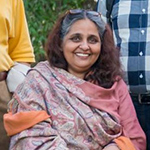How Socially Aware is Social Marketing in Pakistan?
Just google Social Marketing and four simple steps pop up. They are:
- Define your audience. When developing a social marketing campaign or plan, it can be tempting to target a large section of the population as your market.
- Understand their barriers
- Speak to their values
- Tap into influencers
Easy right? That was what everyone assumed would be the case when the affair began in Pakistan but unfortunately, the good things don’t come that easily.
When I got into this game I was almost 30 with a child of my own. I started working with an international donor to set up a social marketing service for family planning in Pakistan. It was my second job in marketing research and the first real one- where I was responsible unlike my first one at an MNC where I had a boss to hide behind.
Defining the audience was no problem, or so we thought. At the bottom of the pyramid was the SEC DE audience, who are unaware and hence in their ignorance have a child every year. Therefore, they are always teetering on the brink of malnutrition and extreme poverty.
When it came to identifying barriers, I thought whether I really needed research for that. Isn’t it usually ignorance and religion, perhaps? Some Maulvi and another fatwa. But we were so naïve.
Speaking about their values- what do they want in life what do they value most? Of course, their priority lies in ensuring their children have a bright future and they can have a comfortable life in their old age.
To tap into influencers, we began looking into the family community and so on. People who would directly have impact, would be relatable and informed. But little did we know.
The lessons I learned 22 years ago were vital. Firstly, even in the defined target audience, the population is not at all homogenous; the cultural, geographic and ethnic diversity of our country ensures that. Hence a national campaign, though not impossible is highly challenging.
Secondly, in social marketing the target audience is not just the end user or decision maker for a product or service. It’s much more complex. It actually targets the audience specified in point number 4 (influencers) just as much; in fact, more. They are the gate keepers who make certain that you get no funding to do anything till they are convinced.
Since the user and the gatekeeper are at two different poles, the barriers that need to be addressed are also at two different poles – the barrier of the gatekeeper is not addressed in the campaign directly, they are generally scared. Fear resided in, how opposition will use this? How will religious leaders react? How will civil society react and exploit the emotions of people?
The research agency can come up with a brilliant insight and an advertising agency can come up with a kick ass campaign but unless the campaign passes through the above barometer of fear it will not go through.
The idea was simple: A key (which was the logo for the product) goes into a lock and opens the door to a shining future, healthy wife, kids getting education and a smiling family. As a researcher I thought it was great and focus groups agreed that it was brilliant, relatable and wonderful.
Nevertheless, our gate keepers thought the image of key going into a lock was sexual. Every day when I entered my home and opened the lock of my front door to take in my sleeping/screaming kid inside, I had never equated that act with sexuality. We got away with the supposed innuendo with the tagline “behtar mustaqbil ki chaabi.”
Today the social marketing teams are much more aware of who the influencers are, and who the gatekeepers are. Or are they? Who remembers the Mathira fiasco from 3 or was it 4 years ago? Raise your hands 😊
-
AUTHOR

Saima Qamar
Marketing Strategist
Saima is an experienced marketing strategist and consumer insights specialist with an ongoing thirst for exploring.





 Posted On October 18 2025
Posted On October 18 2025